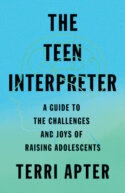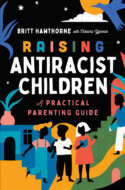As the days grow shorter and the nights grow colder, we turn to all things cozy—and we can think of nothing more heartwarming than an unexpected friendship. Here are the platonic pairings that made the BookPage editors feel all snuggly inside.
The Secret Place
In Tana French’s The Secret Place, Detective Stephen Moran gets his chance to join the Murder Squad when 16-year-old Holly Mackey brings him new evidence in an investigation into a murder that took place on the grounds of her boarding school. Stephen heads to Holly’s school to investigate alongside Antoinette Conway, the original detective assigned to the case. Their first interactions are anything but promising, given their diametrically opposed approaches to their work. Stephen masks his ambition behind a friendly, unassuming persona, but Antoinette, who is biracial, has long since given up on playing nice with people determined to hate her due to her gender, racial background or both. As they interrogate Holly and her friends over the course of one long day, a tentative respect begins to grow between the two of them, thanks to their mutual intellect and their common experience of clawing their way up the ranks from working-class backgrounds. It could be the start of a beautiful partnership, and French makes readers as invested in Stephen and Antoinette’s burgeoning friendship as they are in the mystery’s solution.
—Savanna, Associate Editor
Frank and the Bad Surprise
I’m going to cut to the chase here. The titular character in Martha Brockenbrough and Jon Lau’s Frank and the Bad Surprise is a cat who lives a good life with his humans, and the bad surprise is a new puppy. The puppy interrupts Frank’s naps, has gross puppy breath and eats Frank’s food, so Frank decides it’s time to move on. “Good luck with that puppy,” he writes in a note to his humans. “You will need it.” There’s so much to love about this illustrated chapter book, from the way Brockenbrough’s wry prose perfectly captures Frank’s feline perspective to the way Lau’s paintings bring Frank’s personality to life. In several images, you’ll swear you can almost hear Frank purring. But the best part is the way Brockenbrough engineers a moving reconciliation between the two former enemies, neatly sidestepping schlock and sentiment and going straight for understated emotional truth. It’s positively the cat’s pajamas.
—Stephanie, Associate Editor
Lolly Willowes
In Sylvia Townsend Warner’s 1926 novel, an aging woman breaks away from her grating London family and has a go at independent life in the countryside. After keeping house for her father and brother for over 40 years, Laura Willowes feels liberated in Buckinghamshire—finally free to take long walks in nature and enjoy her own company. Until her nephew visits. Suddenly she is reduced to her old Aunt Lolly self again—put upon and bedeviled—and she becomes so desperate that she calls out for help. Luckily Satan answers, and the novel transforms into a fantastical tale of Lolly’s burgeoning talents as a witch. Along the way, the devil turns out to be a chummy pal: giving Lolly the power to hex her nephew, listening to her complaints about society’s treatment of women. (Satan, as it turns out, is a compassionate and attentive listener.) It’s a darkly humorous novel of a middle-aged woman who is so desperate for autonomy that she’s willing to make a deal—or at least make friends—with the devil.
—Christy, Associate Editor
Lincoln in the Bardo
George Saunders’ first (and so far, only) novel brings together some odd characters. In Lincoln in the Bardo, a group of ghosts works together to save Abraham Lincoln’s 11-year-old son, Willie, from a place between life and death. Here in the bardo, the ghosts know all of one another’s quirks and faults and dreams and regrets. They’ve come to love one another, and as a reader, I found it easy to love them too. The most unlikely best friendship in the bardo is between middle-aged, carnally frustrated Hans Vollman and Roger Bevins III, a heartbroken young man who took his own life and now bursts involuntarily into poetry about the beauty of the world he left behind. One of Saunders’ most remarkable gifts is his ability to make even unpleasant characters deeply befriendable. He outdoes himself with this book, crafting 166 distinct, compelling voices and interspersing them with excerpts from real and invented historical sources. He fantastically spins a moment in American history into a philosophical exploration of how grief can either isolate or unite us.
—Phoebe Farrell-Sherman, Subscriptions
The Kindest Lie
People aren’t all that different, even though it often feels that way, and therein lies one of the key superpowers of the “unlikely friendship” trope: bridging polarized experiences to discover where people actually overlap, where one person’s hand fits snugly into another’s. Nancy Johnson’s debut, The Kindest Lie, is one of the novels that most successfully encompasses both the political optimism of 2008 and the insidious racial divisions that were worsened by the economic stress of the Great Recession. Johnson’s protagonist, Ruth, is a Black chemical engineer who returns to her Rust Belt hometown to seek out the child she placed for adoption when she was 17. Upon her return, Ruth bonds with Midnight, an 11-year-old white boy who is mostly being raised by his grandmother but still hopes for connection with his neglectful, bigoted father. Ruth’s and Midnight’s experiences of race, class and privilege are very different, but they’re both lonely, lost and understandably flawed people, and together they find something akin to belonging in a heartbreaking world.
—Cat, Deputy Editor



























